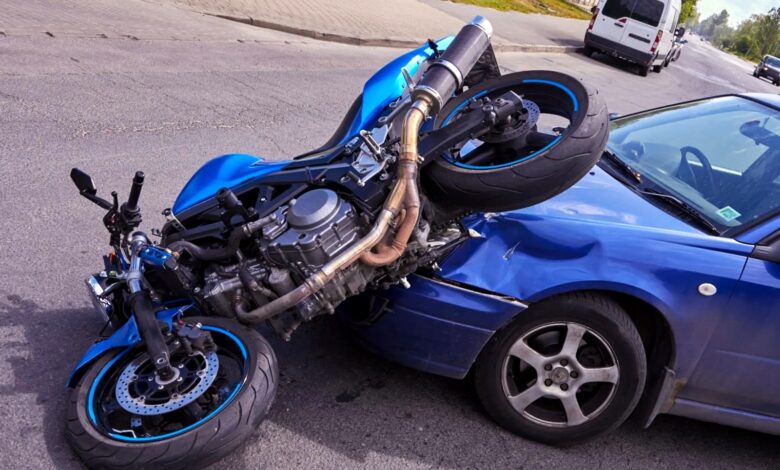Understanding Utah Motorcycle Accident Laws: A Guide for Motorcyclists

Motorcycle accidents can be devastating. They can result in serious injuries, long-term disabilities, and even death. If you ride a motorcycle in Utah, you must understand the state’s motorcycle accident laws to protect yourself and your loved ones. Knowing Utah motorcycle accident laws can help you make informed decisions when it comes to your safety and legal rights.
This blog post is designed to provide you with an in-depth understanding of Utah’s motorcycle accident laws. We will cover various topics, including helmet laws, insurance requirements, and faults in motorcycle accidents.
As motorcyclists, we all share a passion for the open road and the freedom that comes with it. However, with this freedom comes great responsibility. By understanding the laws that govern motorcycle accidents in Utah, you can ride confidently and safely while enjoying the freedom of the open road.
Read More: Who’s at Fault in a Motor Vehicle Accident? A Brief Guide
Overview of Helmets and Eye Protection Laws
When it comes to motorcycle safety, helmets, and eye protection are essential components. In Utah, all motorcycle riders and passengers are required to wear a helmet that complies with federal safety standards. The helmet must have a chin strap and be properly fastened at all times while the motorcycle is in motion. In addition to helmets, Utah law also requires riders to wear eye protection, which can include goggles, glasses, or a face shield. This requirement is in place to protect against debris, wind, and insects that can cause serious eye injuries while riding. Understanding and adhering to these laws can go a long way in preventing motorcycle accidents and injuries.
Learning and Understanding Lane Splitting Laws
If you’re a motorcyclist in Utah, it’s important to know and understand the state’s lane-splitting laws to avoid potential accidents and legal repercussions. Lane splitting, or the act of riding a motorcycle between two lanes of stopped or slow-moving vehicles, is currently not legal in Utah. However, the laws surrounding lane filtering, or slowly moving between cars to pass through traffic, are less clear and can vary depending on the situation. It’s crucial to educate yourself on these laws and seek legal advice if you are involved in a motorcycle accident while lane filtering. Not only can understanding and following these laws help keep you safe on the road, but it can also protect your legal rights in the event of an accident.
Obligations of Motorcyclists in the Event of an Accident
In case you need to handle a motorcycle crash case in Utah, it is important to understand the obligations that motorcyclists have under Utah law. First and foremost, motorcyclists must immediately stop at or near the scene of the accident and remain there until they have provided their name, address, and registration to any party involved, or until authorized by a law enforcement officer to leave. Additionally, if someone is injured in the accident, the motorcyclist must render reasonable assistance to that person, including arranging for medical help if necessary. Finally, motorcyclists must also report the accident to the proper authorities if the incident resulted in death, injury, or property damage exceeding $1,500. Failure to fulfill any of these obligations can result in legal consequences, including fines and imprisonment, and may affect any potential compensation in a personal injury case. As a responsible motorcyclist, it is crucial to understand and comply with these obligations in the event of an accident.
Insurance Requirements for Motorcyclists

When it comes to riding a motorcycle in Utah, it is important to understand the state’s insurance requirements for motorcyclists. According to Utah law, all motorcyclists must carry at least $25,000 in bodily injury liability coverage for each person injured in an accident, and $65,000 in bodily injury liability coverage for all persons injured in a single accident. Additionally, motorcyclists must have at least $15,000 in property damage liability coverage per accident. This coverage is mandatory for all registered motorcycles in Utah. Motorcyclists need to have adequate insurance coverage to protect themselves and others in the event of an accident. Without proper insurance coverage, motorcyclists risk financial ruin in the event of a serious accident or injury.
Read More: How to File Motorcycle Accident Lawsuits: Everything You Need to Know
Legal Consequences for Failing to Comply with Motorcycle Laws
As a motorcyclist, it is important to understand the legal consequences that come with failing to comply with motorcycle laws in Utah. Violations of these laws can result in fines, points on your driver’s license, and even license suspension. Additionally, if you are involved in a motorcycle accident and found to have violated a motorcycle law, you may be held liable for any resulting damages or injuries. Some common motorcycle laws in Utah include wearing a helmet, carrying a motorcycle endorsement on your driver’s license, and following traffic laws and speed limits. Don’t take these laws lightly, as they are in place to ensure the safety of all drivers on the road, including yourself. By complying with these laws, you can help prevent accidents and protect yourself from legal repercussions.
In conclusion, understanding the laws surrounding motorcycle accidents in Utah is essential for motorcyclists to protect their rights and ensure they receive the appropriate compensation for any injuries sustained in an accident. It’s important to follow safe riding practices, obtain proper insurance coverage, and seek legal counsel if necessary. By taking these steps, motorcyclists can stay safe while enjoying the freedom and thrill of riding on Utah’s roads.











